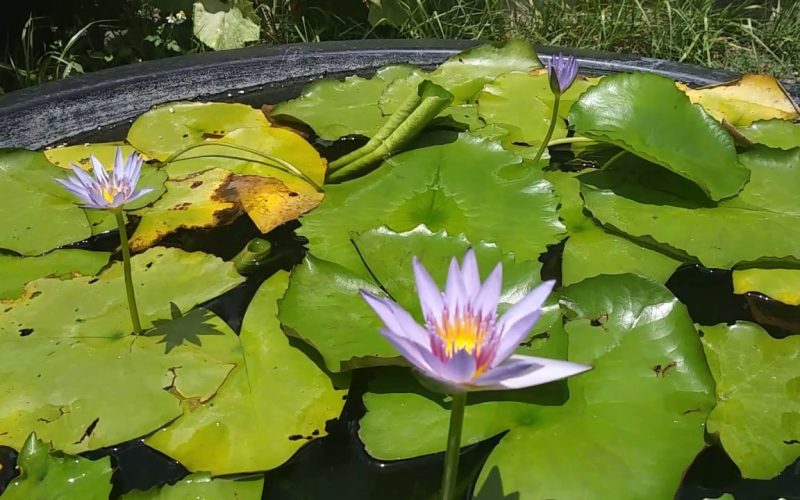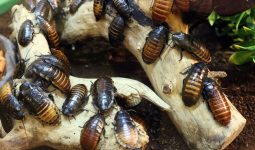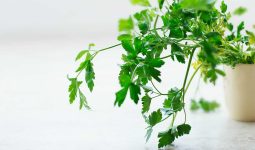Nymphaea capensis (Cape blue waterlily) is a member of the water lily family Nymphaeaceae.
It is an aquatic flowering plant.
Scientific classification
- Kingdom: Plantae
- Clade: Tracheophytes
- Clade: Angiosperms
- Order: Nymphaeales
- Family: Nymphaeaceae
- Genus: Nymphaea
- Species: N. capensis
Binomial name Nymphaea capensis
Nymphaea Capensis comes from Madagascar, South Africa, and is also classified as N.Spectabilis, Nymphaea Nouchali var. Caerulea, N.Calliantha, N.Mildbraedii, and Cape Blue Water-Lily.
In South Africa and neighbouring nations, it is found rising abundantly in freshwater habitats. In a dry river bed, this plant’s bulb can survive relatively long periods of time without precipitation.
The bulb will sprout leaves and flowers during the rainy season, as the riverbed or bog fills up. The Cape blue water, Nymphaea Caerulea, the lily blue lotus, and Nymphaea Capensis are no longer regarded as different species and have been sunk into this genus.
The most beautiful aquatic plants are certainly water lilies and are a must for any sunny water garden. But it is not only important to use them in ponds.
They can also be enjoyed by innovative gardeners with small gardens and sunny courtyards, as they can be successfully cultivated in a variety of pottery containers filled with water, wooden barrels, old kitchen sinks and water features.
N. Capensis is a clump-forming perennial with glossy, shiny leaf-blades that are up to 40 cm in diameter, wavy margin bluntly toothed and cleft almost to the centre where the petiole is attached.
The mature leaves of Nymphaea Capensis are finely blotched with wavy edges and are somewhat blunt-toothed. The water lily does not have true stems; the leaves are on long petioles (leaf stalks) that emerge directly from the rhizome.
At the tip of a sturdy green stalk, the large, elegant blue flowers of Capensis are held well above the water. This plant repeatedly blooms from mid-spring to early fall.
With four sepals, green on the outside and white to blue on the inside, the flowers are bisexual, star-like and regular, with up to 30 petals, around 5 cm long and 1.5 cm wide.
There are many blue-tipped, light golden-yellow stamens and green sepals in the centre of the flower. The innermost petals show a change to the stamens, which are up to 4 cm long.
They are sweet-scented and powerfully omnipresent. In a luminous space, cut blooms last well. The flowers open early to mid-morning, close completely late in the afternoon, and remain closed all night long.
The flowers’ opening and closing process is handled by the sepals. The flower loses the ability to close if they are withdrawn. A fully open flower is 15-20 cm wide, and each flower lasts for approximately four days.
The flowers are regularly visited by bees, which are the most likely pollinators. There is no creeping rootstock in Nymphaea Capensis; the root is large and bulbous and does not reproduce from eyes or adventitious buds like other plants. Hardiness: (1c/35f, 4c/40f) 10-11.
Nymphaea Capensis, except where limestone is present, is an easily grown wild water lily. It is hardy in the north down to about 1c, but it is unlikely that it can survive in colder areas.
Nymphaea Capensis needs a composted rich topsoil mix which is mildly acidic. While during the winter, the blue water lily goes dormant, during its dormancy it should be left in the water.
They keep their leaves on the coast throughout winter. The planting container should be larger and topped with gravel than usual. Before the plant begins to grow, the bulb also needs to be tied down to keep it from floating free.
The Cape blue water lily grows best in full sun to semi-sun and relatively shallow water, and they often like still water and don’t like the wind.
The plant, native to Africa, is found abundantly growing in freshwater environments in tropical regions of Africa, and as an introduced species in Australia, the state of Florida, and other tropical areas.[1] The bulb of this plant can survive relatively long periods in a dry river bed without rainfall.
The bulb will sprout leaves and flowers during the rainy season, as the riverbed or bog fills up. In full sun to semi-sun and relatively shallow water, the Cape blue waterlily grows best.
Description
Perennial, aquatic herb, with erect, tuberous, ovoid, non-branching rhizomes. Absent Stolons. Brood-absent bodies. Adventive origins.
Weakly dimorphic leaves; partially adnate stipules; petiole terete, narrowly peltate attachment; floating lamina 120-300 ⁇ 100-250 mm, suborbicular, deeply cordate to slightly sagittate (overlapping lobe margins), thin and smooth, shiny, glabrous, bright green upper surface; irregularly sinuous margin, crisp.
Flowers 60 to 200 mm in diameter, 25 to 40 cm above water; sweet-scented; 4, 40 to 70 mm long outer tepals, triangular-ovate, subacute apex, blue inner surface, the green outer surface, obscurely veined.
Multiple internal tepals, 35-55 mm long, shorter than the outer tepals, elliptic-lanceolate, ovate, sky-blue, deep blue, deep pink, mauve, rarely white.
Numerous stamens, 15-35 mm long, yellow filaments, blue anther, conspicuous appendages (same colour as tepals). Partly free ovary, with short-tapered stylar processes, globose.
Globose berries. 1.5-1.7 seeds c. 1 mm, semi-globose ellipsoid, with rows of long, hairy papillae, dull dark olive-brown.
Recognition
They are marked by the presence of conspicuous anther appendages, absent in the other two naturalized species, N. Alba, N.
Mexicana, and the several hardy cultivars of Nymphaea in New Zealand that are bred from the Nymphaea subgenus Nymphaea species.
In Nymphaea capensis, the flower colour is usually blue, pink or mauve (in New Zealand, rarely white), while it is white, flushed pink or red in N. alba and yellow in N. Mexicana.
In possessing rows of hair-like papillae, which differ from the uniformly hairy seeds of N, the seeds are also distinctive. Mexicana and the glabrous N. seeds. Alba (although N. capensis seeds in New Zealand have not been recorded).
It is also possible to separate Nymphaea capensis from N. By having an upright, non-branching caudex-like rhizome rather than the branching, horizontal rhizome, alba and’hardy ‘cultivars.
Nymphaea capensis’ striking anther appendages are blue, pink or mauve (the same colour as the tepals).
They are representative of the Nymphaea subgenus Brachyceras species, although they are white in some Central and South American species (and a few African species).
Also present in New Zealand are several hybrid cultivars involving species from this subgenus (Champion & Clayton 2001).
Distribution
Occurs naturally in Eastern and southern Africa.
Habitat
Eutrophic dune lake, They generally grow in stagnant and slow-flowing waters of lakes, ponds and streams.








